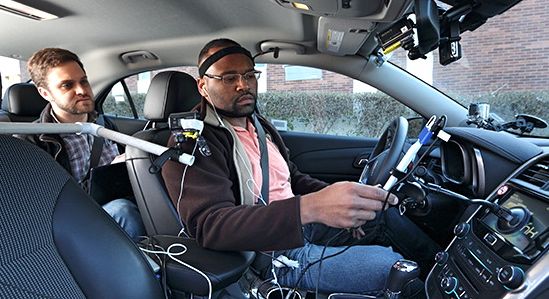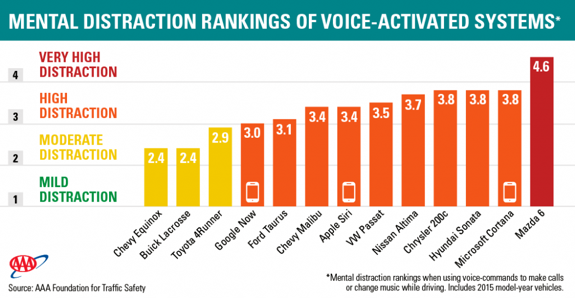
The process of “readjusting to the task of driving” after using wireless communications devices presents a “hidden and pervasive danger,” according to a AAA report.
Researchers found that driver distractions can persist for almost a half minute after use of some cell phones and in-vehicle information systems.
The AAA said its study reveals that hands-free technologies such as in-vehicle voice-activated systems can distract drivers “even if their eyes are on the road and their hands are on the wheel.”
“The results indicate that motorists could miss stop signs, pedestrians and other vehicles while the mind is readjusting to the task of driving,” said Peter Kissinger, head of the AAA Foundation for Traffic Safety.
Most voice-activated systems tested resulted in a high level of distraction for users, researchers said. All systems “increased mental distraction to potentially unsafe levels.”
The study, third in a series on cognitive distraction, compared new hands-free technologies in 10 2015 vehicles and three types of smart phones. It was done by one of the nation’s top researchers on distracted driving.
The best performing in-vehicle system was the Chevy Equinox while the worst was the Mazda 6.
Among hands-free phone systems, Google Now performed best, followed closely by Apple Siri and Microsoft Cortana. All of the systems were rated “high distractions” while being used to make phone calls. When being used to send texts, the smartphone systems were deemed to be even more serious distractions.
Distraction lingered for 27 seconds in the worst-testing systems, and for 15 seconds in the best.
The systems that performed best generally had fewer errors, required less time on task and were relatively easy to use, researchers said. (text continues)
Older drivers performed significantly worse than younger ones, the AAA study found.
“The massive increase in voice-activated technologies in cars and phones represents a growing safety problem for drivers,” said Marshall Doney, AAA’s president and CEO. “We are concerned that these new systems may invite driver distraction, even as overwhelming scientific evidence concludes that hands-free is not risk free.”
The study, done by David Strayer’s team at the University of Utah, involved 257 subjects who were allowed to practice with the vehicle-information systems before testing. The practice did not seem to affect results, researchers said.
- Read the AAA report on in-vehicle information systems.
- View a video about the study.



“overwhelming scientific evidence concludes that hands-free is not risk free.” This exactly what I have been saying for years. Yet our politicians still allow talking on a phone…they only ban holding a phone. Why? To me the answer is obvious … they care more about money than safety. Writing tickets and taxes on the transactions that flow from a crash produce lots of money for State treasuries.
I have read your survey report and totally agree on distraction. Especially in urban driving, the company I drive for are having kits fitted to our trucks. Personally in the interest of road safety I disagree with any form of communication while behind wheel of 18 ton truck.